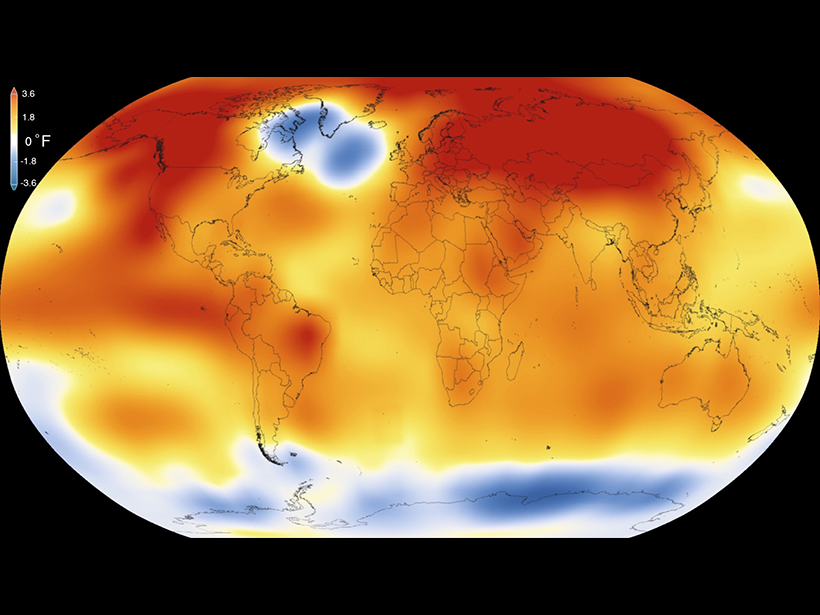Source: Journal of Geophysical Research: Oceans
It’s been a weird past few years for the Pacific Ocean, thanks to rising global temperatures. First, there was “the Blob,” a mass of warm water that hit the West Coast of the United States in late 2014, killing whales, sea lions, and many other types of marine life. Then, in spring 2015, “Godzilla” El Niño arrived, a climate anomaly driven by the warmest sea surface temperatures in half a century.
Many effects of Godzilla El Niño were immediately obvious, such as wildfires in Australia and the Amazon and severe drought in Southern California. Others, such as its impact on marine life, are still being investigated. In a new study, Sánchez-Velasco et al. examine how the event changed the distribution of four species of tropical fish larvae in a particularly sensitive environment: a large, shallow, low-oxygen zone off the coast of Mexico.

The warmer and saltier water is, the less oxygen it can hold. Although most fish become extremely stressed when oxygen levels fall below 1 milliliter per liter, different species of fish have varying tolerances for low-oxygen environments. The researchers collected larvae from four different species of tropical fish—Diogenichthys laternatus, Vinciguerria lucetia, Bregmaceros bathymaster, and Auxis subspecies (spp.), a species of tuna—to see how their distribution and abundance changed before and after the monster El Niño. They also collected zooplankton, tiny drifting organisms that provide an important source of food for fish and whales.
To their surprise, the team found more fish larvae after the El Niño event, whereas zooplankton levels declined. The distribution of different species had changed, however: Before, V. lucetia, a small, bioluminescent fish commonly known as the Panama lightfish, and Auxis spp. were most abundant close to the ocean surface, where oxygen levels are highest, whereas B. bathymaster, a type of cod, and D. laternatus, another type of bioluminescent fish, dominated the deeper, lower-oxygen layers.
After the El Niño event, however, all four species were more abundant in the upper, higher-oxygen layer, suggesting that they were trying to avoid the rise of an extremely low oxygen layer from underneath. Their migration could signal an adaptive response to prolonged periods of ocean warming, the team suggests. (Journal of Geophysical Research: Oceans, https://doi.org/10.1002/2016JC012622, 2017)
—Emily Underwood, Freelance Writer
Citation:
Underwood, E. (2017), How “Godzilla” El Niño affected tropical fish in low-oxygen zone, Eos, 98, https://doi.org/10.1029/2017EO071173. Published on 13 April 2017.
Text © 2017. The authors. CC BY-NC-ND 3.0
Except where otherwise noted, images are subject to copyright. Any reuse without express permission from the copyright owner is prohibited.

